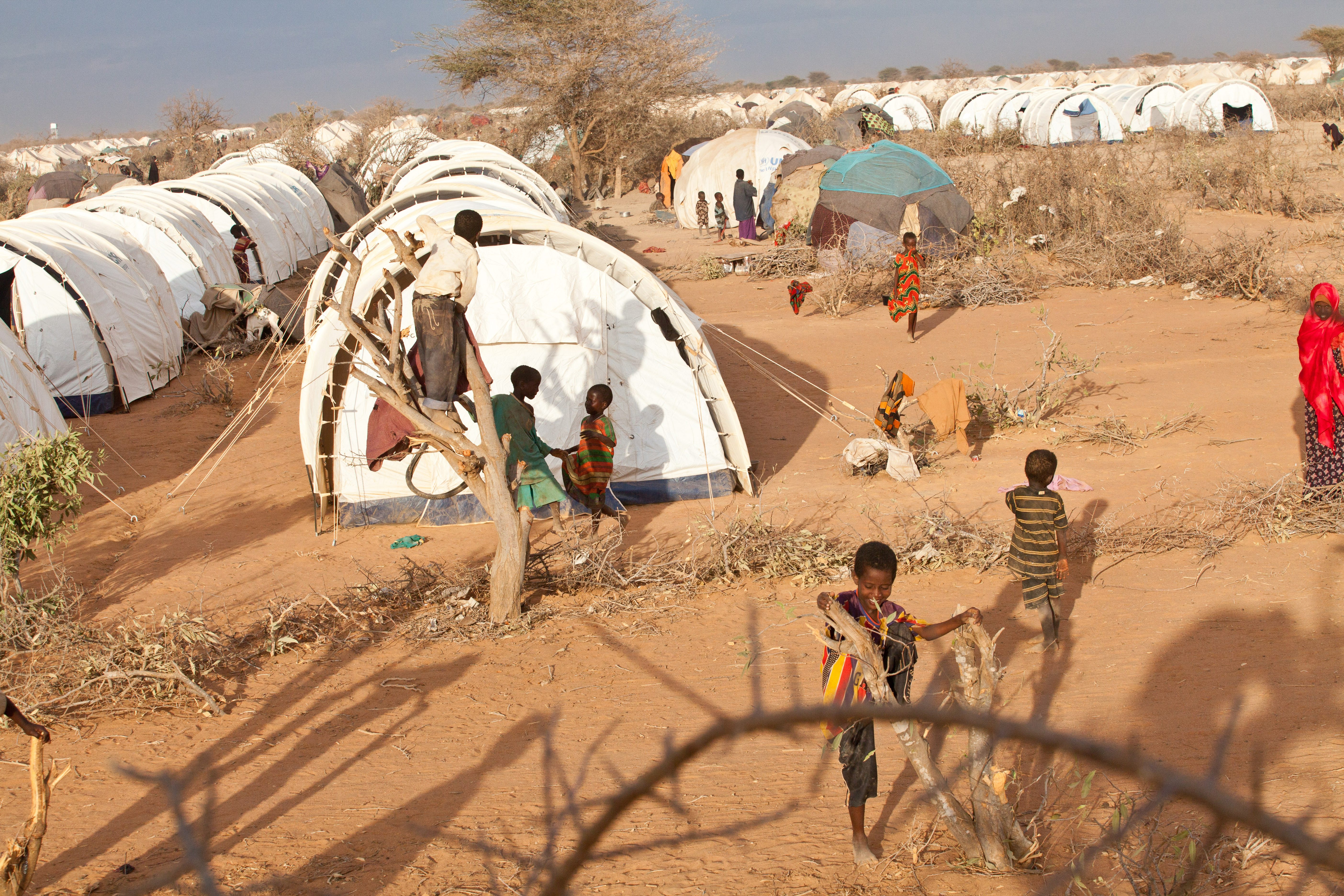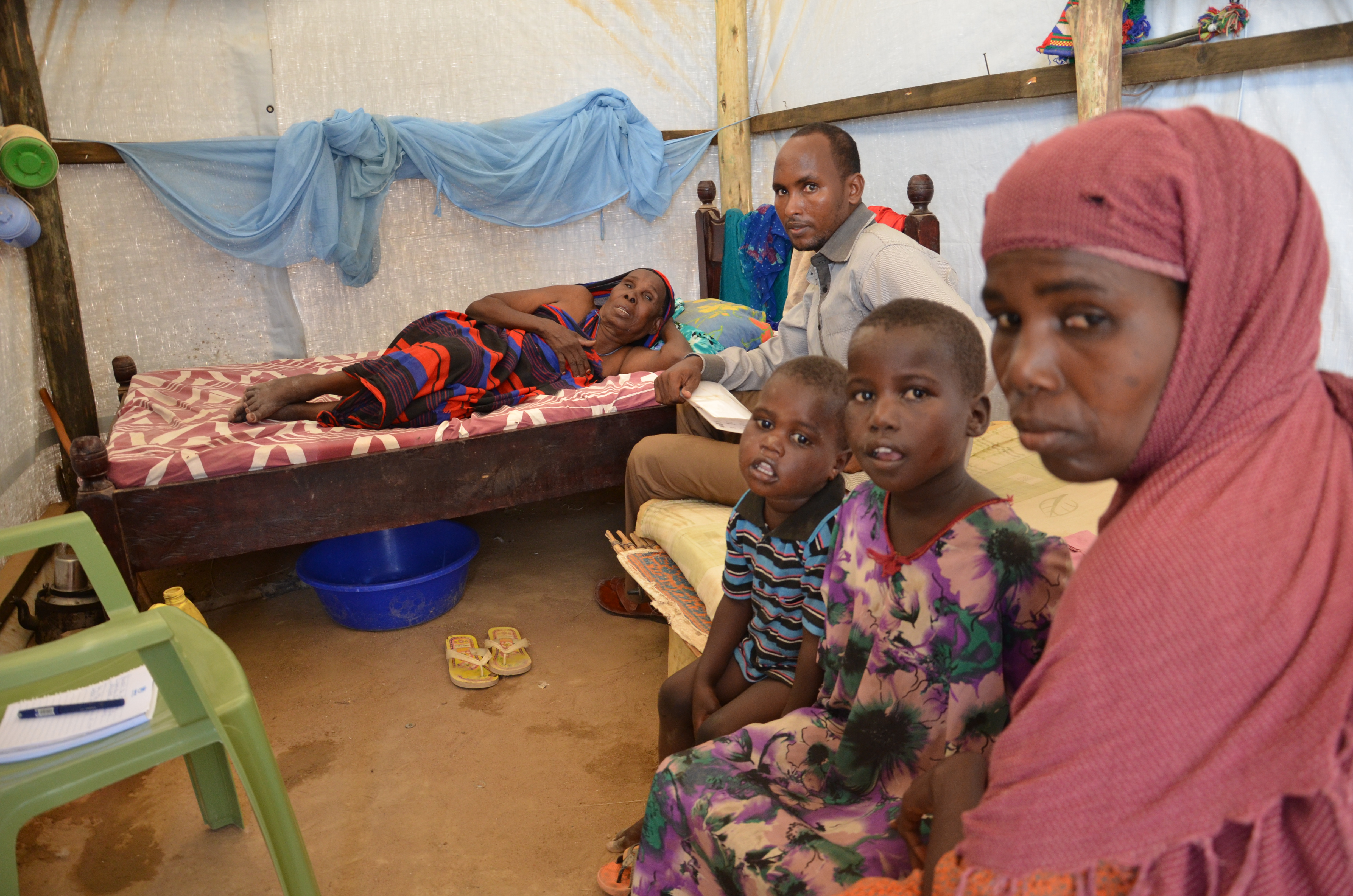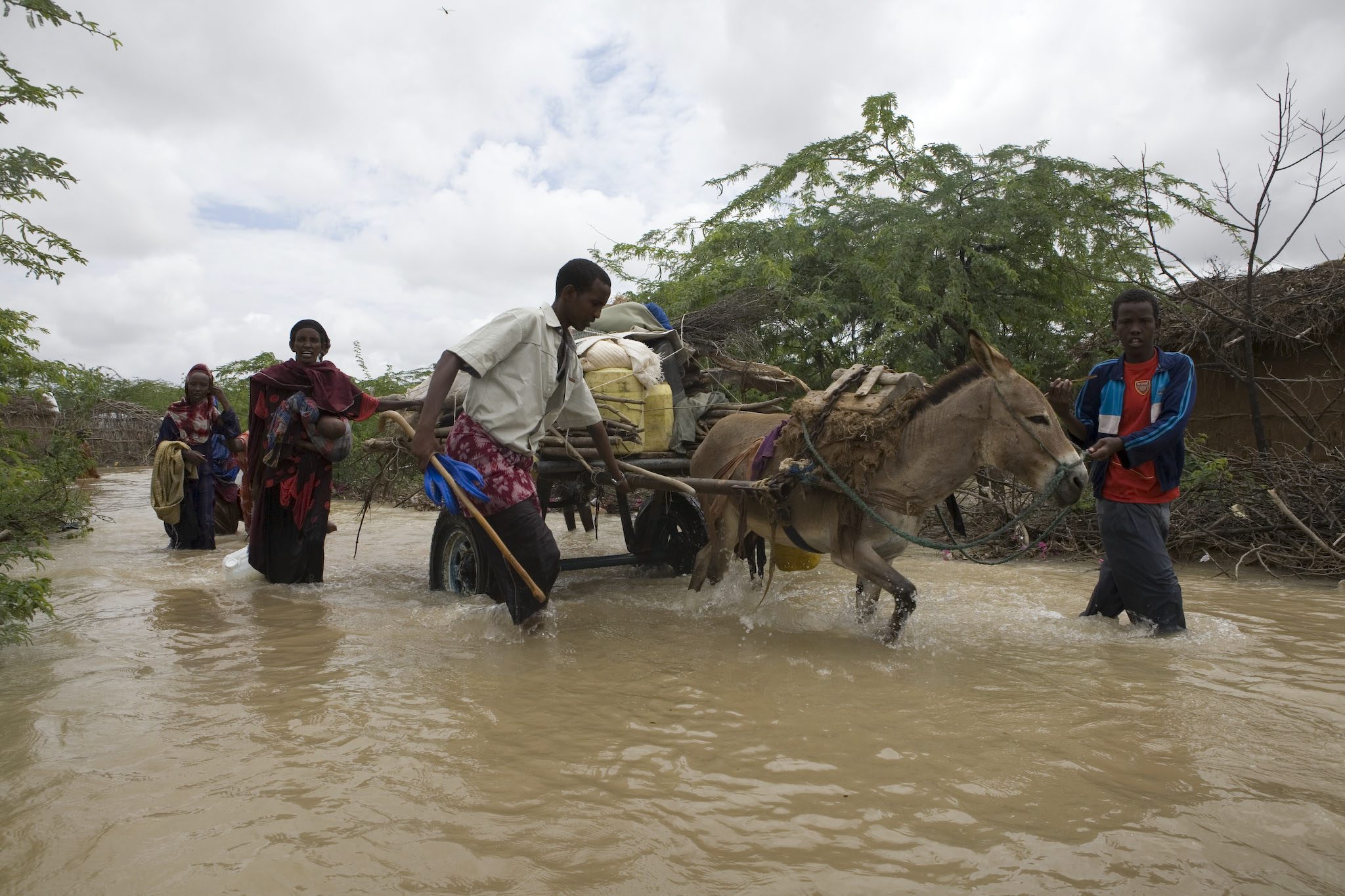Somali refugees in Kenya
Somali refugees in Kenya
Ten Somali refugees including eight children have died of disease and malnutrition over the past six days in Kenya's volatile border region, as aid agencies have been prevented by the Kenyan authorities from moving the group to a safer location inside Kenya. UNHCR is gravely concerned about the situation.
Between 3,500 and 5,000 Somali refugees are encamped in the volatile Mandera border zone. About 70 children were admitted this week to the Mandera hospital suffering from severe malnutrition. Although most of them have been able to receive therapeutic feeding from our partner MSF Spain, about 800 children remain at risk of severe malnutrition if food is not delivered in the next two days. Data from Mandera Hospital also indicate that the refugees are suffering from serious cases of malaria, diarrhoea, conjunctivitis, anaemia and abdominal parasite infections. The refugee population comprises 400 pregnant or lactating women and 2,000 children.
UNHCR is negotiating with the Kenyan authorities in Nairobi and Mandera in a bid to obtain their agreement to either create a temporary site 7 km away from the border, or transfer the refugees to the existing refugee camps in Dadaab (eastern Kenya) or Kakuma (north-west Kenya). In the meantime UNHCR would like to at least be allowed to establish an emergency therapeutic feeding centre within a safe distance from the border.
Last Friday, a first convoy of 150 refugees was ready to leave from Mandera to Dadaab - a three-day, 500 km journey. But the planned transfer was suddenly called off when the authorities denied the green light.
About 10,000 Somalis fled to Kenya following clan fighting in the Somali town of Bula Hawa, across the border from Kenya in April and May. On May 15, stray bullets killed four refugees and injured seven others. The refugees are currently encamped at a very insecure location just 500 metres from the border between Kenya and Somalia.
Two weeks ago, UNHCR sent three planes of assistance supplies to Mandera, including water tanks, tents, high protein biscuits and plastic sheeting, as well as medicines and supplies for the hospital. However, it is presently not possible to mount an effective programme of assistance at the border. Last Saturday, plans for food distribution were disrupted when gunfire broke out across the border.
Roughly half of the initial 10,000 refugees returned to Somalia two weeks ago, allegedly following visits by Kenyan and Somali officials encouraging them to go back. They are now believed to be encamped at a location called Belet Amin, not far from the Kenyan border. UNHCR expressed its concern that no refugee should be pressured to go back.








